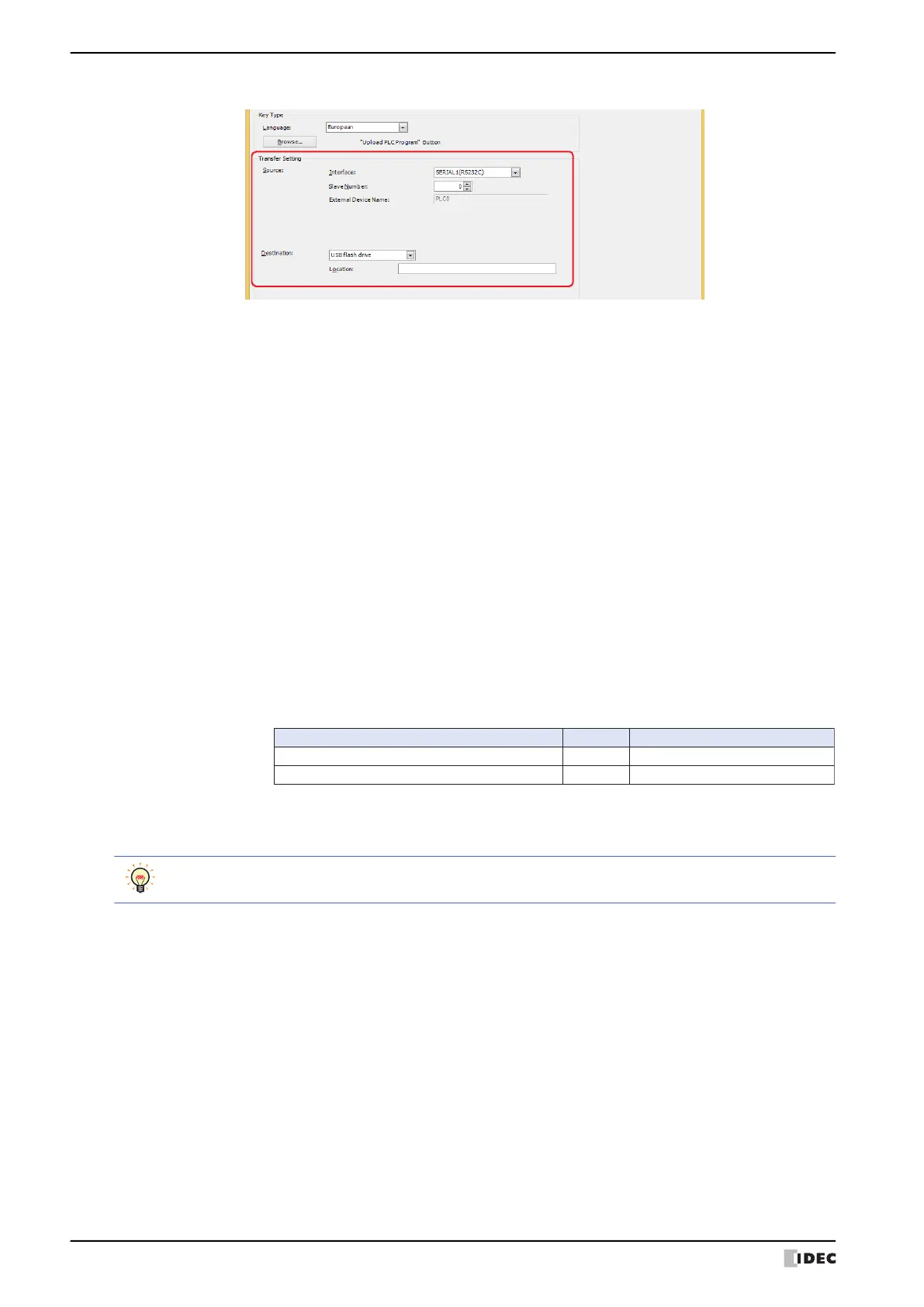6 Multi-Command
12-54 WindO/I-NV4 User’s Manual
Upload PLC Program is selected.
*1 HG5G/4G/3G/2G-V, HG4G/3G, HG2G-5F only
*2 HG5G/4G/3G/2G-V, HG4G/3G, HG2G-5F/-5T, HG1G/1P only
*3 HG2J-7U only
Source: Specify the source PLC connected to the MICRO/I. The PLC type is configured in the Project Settings
dialog box, on the Communication Driver Network tab. For details, refer to Chapter 4 “3.4
Communication Driver Network Tab” on page 4-52.
Interface: Select the communication interface in which the MICRO/I is connecting
to the upload source PLC from serial interface or Ethernet. For details,
refer to Chapter 4 “Interface Configuration” on page 4-35.
If serial interface is selected for Interface.
Slave Number: Specify the slave number of the upload source PLC (0 to 31).
External Device Name: The name of the specified PLC is displayed here.
If Ethernet is selected for Interface.
Select from the following method:
Specify External Device ID:
Specify the External Device ID (0 to 31) of the upload source PLC. This is
the External Device ID number set in the Project Settings dialog box,
on the Communication Driver Network tab.
External Device Name: The name of the specified PLC is displayed here.
Specify IP Address: Specify the IP address and port number of the upload source PLC.
Destination: Specify where to save the PLC program uploaded from the PLC connected to the MICRO/I. Select the
type of external memory: SD Memory Card
*1
, USB Flash Drive
*2
, USB1
*3
or USB2
*3
.
Location: Specify the location of the folder where the uploaded PLC program will be saved. The
maximum number is 247 characters. Only alphanumeric characters and symbols can be
used. Path delimiters and characters that cannot be used vary based on the model.
Example: To save a program to the folder “Uploaded_Program” in an external memory
device:
Uploaded_Program
Model
HG2J-7U
HG5G/4G/3G/2G-V, HG4G/3G, HG2G-5F/-5T, HG1G/1P
Delimiter Characters that cannot be used
" # $ & ' ( ) * : ; < > ? \ ` | ~
" * : ; < > ? |
/
\
A uploaded PLC program using the Data Transfer function is saved as a ZLD Project File(.zld).

